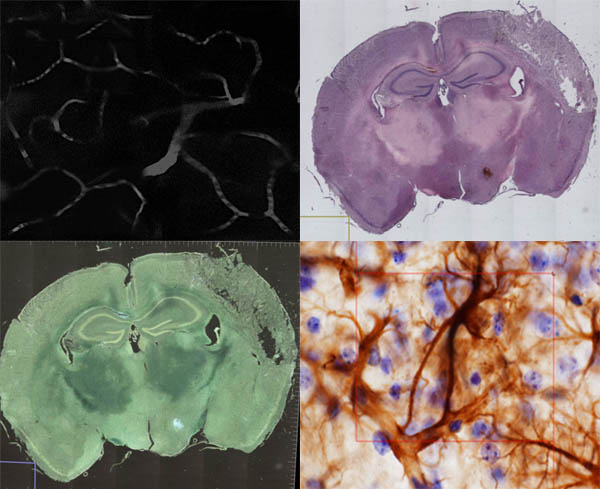The Pre-clinical Optical Group (POG) at CFIN engages in interdisciplinary preclinical research with the overall goal to understand and quantify capillary dysfunction in various age-related disorders including ischemic stroke and reperfusion injuries, Alzheimer’s disease and diabetic neuropathy. The growing population of elderly in the western world puts a fundamental medical and economical premium on understanding the functional effects of these small vessel diseases to critically facilitate the advance of future clinical treatments. The CFIN POG makes up one of the pillars of the interdisciplinary scientific Preclinical Research Facility (PiFa) at Aarhus University/ Aarhus University Hospital. By joining forces with the CFIN Preclinical MR-group, the PET research group and the CENSE group at the Neurosurgery Department of Aarhus University Hospital, we have the opportunity to employ an array of cutting edge scanning methods that in concert allow us to shed new light on small vessels brain disease mechanisms and hopefully inform development of future treatments.
Coordinator: Eugenio Gutierrez
PhD student Maryam Anzabi studies the effect of subarachnoid hemorrhage (SAH) on capillary flow pattern and delayed cerebral ischemic damage. SAH is a unique form of hemorrhagic stroke typically resulting from rupture of intracranial aneurysms. SAH represents a devastating disease, which is associated with high mortality and poor functional outcome. Twenty to forty percent of SAH patients, who survive the initial hemorrhage, develop a second phase of brain injury characterized by reduced level of consciousness and/or focal neurologic deficits, the so-called delayed cerebral ischemia (DCI). Only one-third of survivors are able to regain their previous employment, and nearly half of the survivors suffer from permanent neurocognitive complications. Thus, there is a pressing need to understanding the mechanisms underlying DCI that may benefit patients and offers the possibility of a new treatment. In this context, a murine model of SAH is used to examine whether brain histopathological abnormalities correlate with capillary flow disturbances four days after SAH induction by combining the results from two-photon microscopy with histological investigations. Results obtained by this project will be published in the near future.
